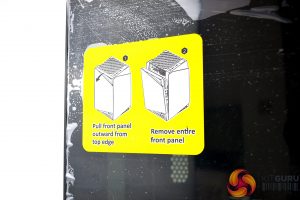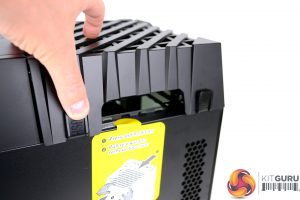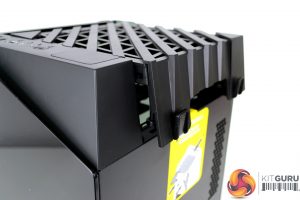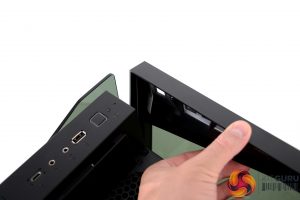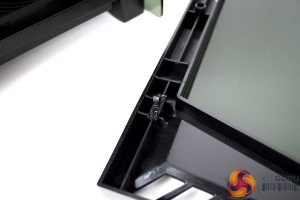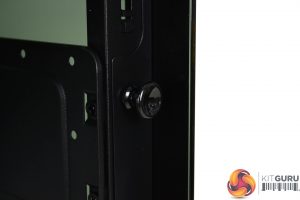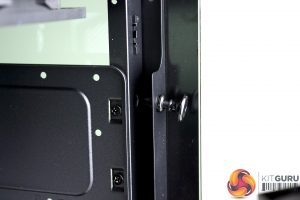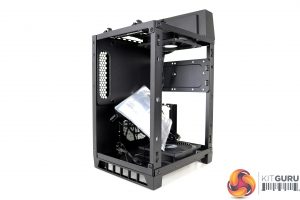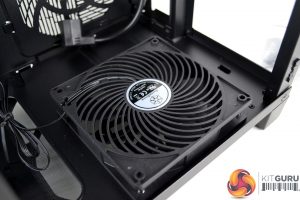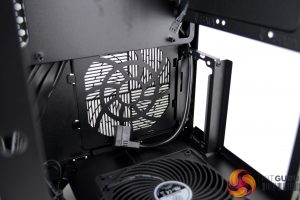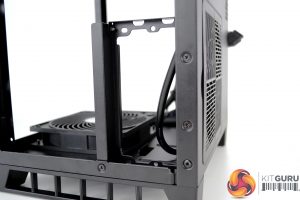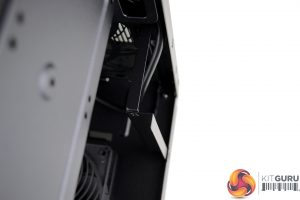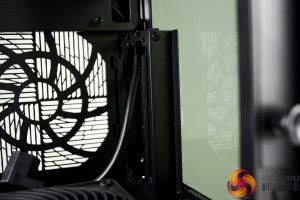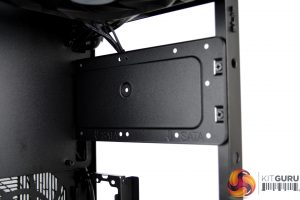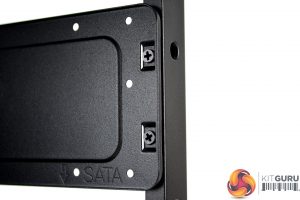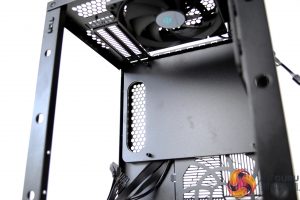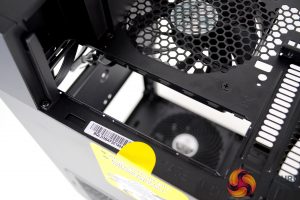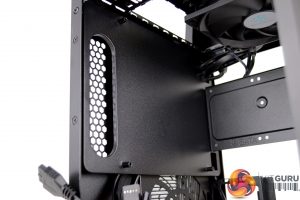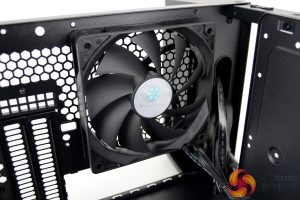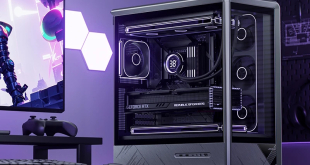Removing all the external panels is done in a specific sequence and there are helpful labels stuck to the case with basic instructions. The labels are easy to remove and don’t leave any residue behind that is tough to remove.
To remove the panels, first press in the two tabs on the top panel and slide the whole panel towards the rear of the case to release it from the chassis. The top panel can then be lifted out of the way and set aside.
Next, the front tempered glass panel must be removed by pushing out from the top. The front panel is held in place by a series of plastic clips that run down either side of the panel frame and latch on to the chassis.
Once the front tempered glass panel is removed, both of the side panels can be taken off using the same method. There are two push pin clips holding the side tempered glass panels in place, simply pull out the push pins and slide the panels forward to release them from the chassis.
With all the side panels removed, you can clearly see that access into the case is excellent. However, this open-frame design has an effect on the rigidity of the chassis and there is a lot of flex in the frame without the side panels attached.
At the bottom of the chassis is a pre-installed CC12025H12D 4-pin PWM 120mm fan manufactured by CoolCox with an integrated plastic grill/shroud to protect nearby cables from being trapped by the fan blades. There is no detail of the speed range printed on the fan. Alternatively, a 120mm AIO CPU coler or radiator could be mounted here.
The bottom section of the chassis is where the power supply is housed. An SFX form factor power supply mounting bracket is attached to the chassis frame with three Philips head screws, the bracket is designed to be removed from the case and fitted to the power supply prior to installation for improved access.
One thing that strikes me as being a little odd with the power supply mount is that while there is a vent for cool air to enter the power supply, the exhausted air from the power supply is directed straight at one of the tempered glass side panels with only approximately a 10mm gap for airflow, meaning any warm air from the power supply is directed back into the case.
You would have thought that is approach will have a negative impact on system temperature, and while SilverStone was going to the trouble of adding a vent to the opposite tempered glass panel for the graphics card, it would have made sense to place a vent in this tempered glass panel to exhaust warm air from the power supply and away from the system.
Above the power supply is another bracket for mounting HDDs and SSD, the bracket can be detached from the chassis by removing two screws. Either two 2.5-inch SSDs or a single 3.5-inch HDD can be mounted here.
The top section of the chassis is taken up by a motherboard tray that supports the installation of mini-ITX and mini-DTX motherboards. The motherboard fits in a vertical orientation, rotated 90⁰ compared with traditional ATX cases, meaning the rear I/O is situated at the top of the chassis.
This also places the GPU in a vertical orientation with the fans facing the new airflow vent in the tempered glass side panel. At the top of the chassis is another pre-installed 120mm fan configured to exhaust warm air out from the top of the chassis.
 KitGuru KitGuru.net – Tech News | Hardware News | Hardware Reviews | IOS | Mobile | Gaming | Graphics Cards
KitGuru KitGuru.net – Tech News | Hardware News | Hardware Reviews | IOS | Mobile | Gaming | Graphics Cards



